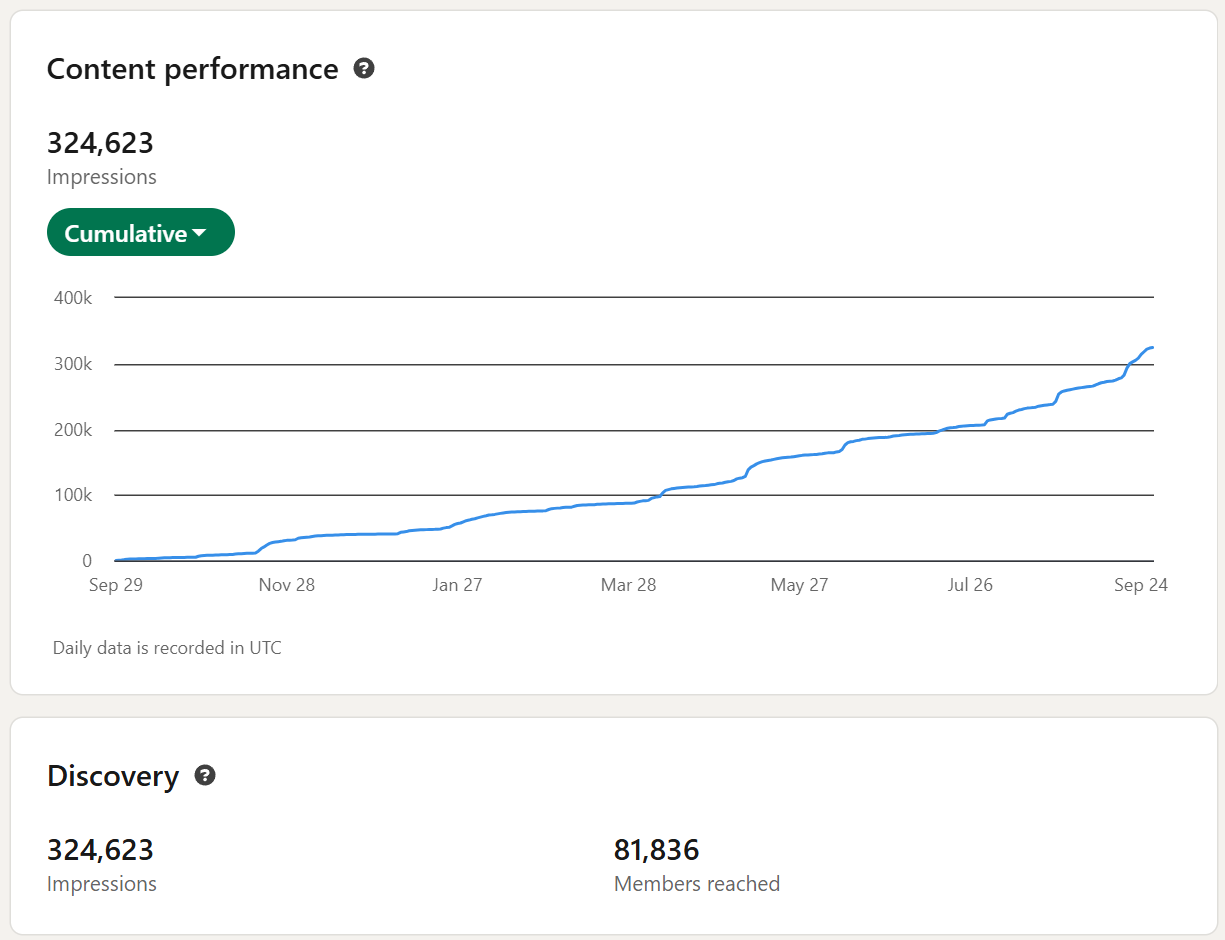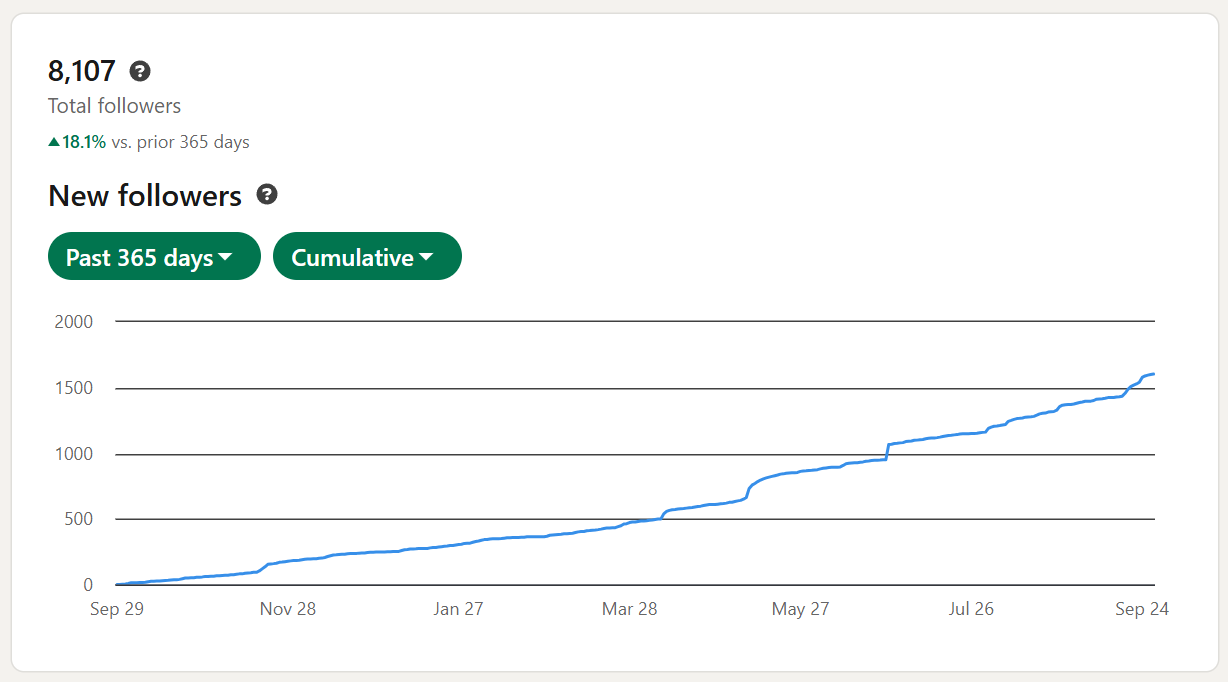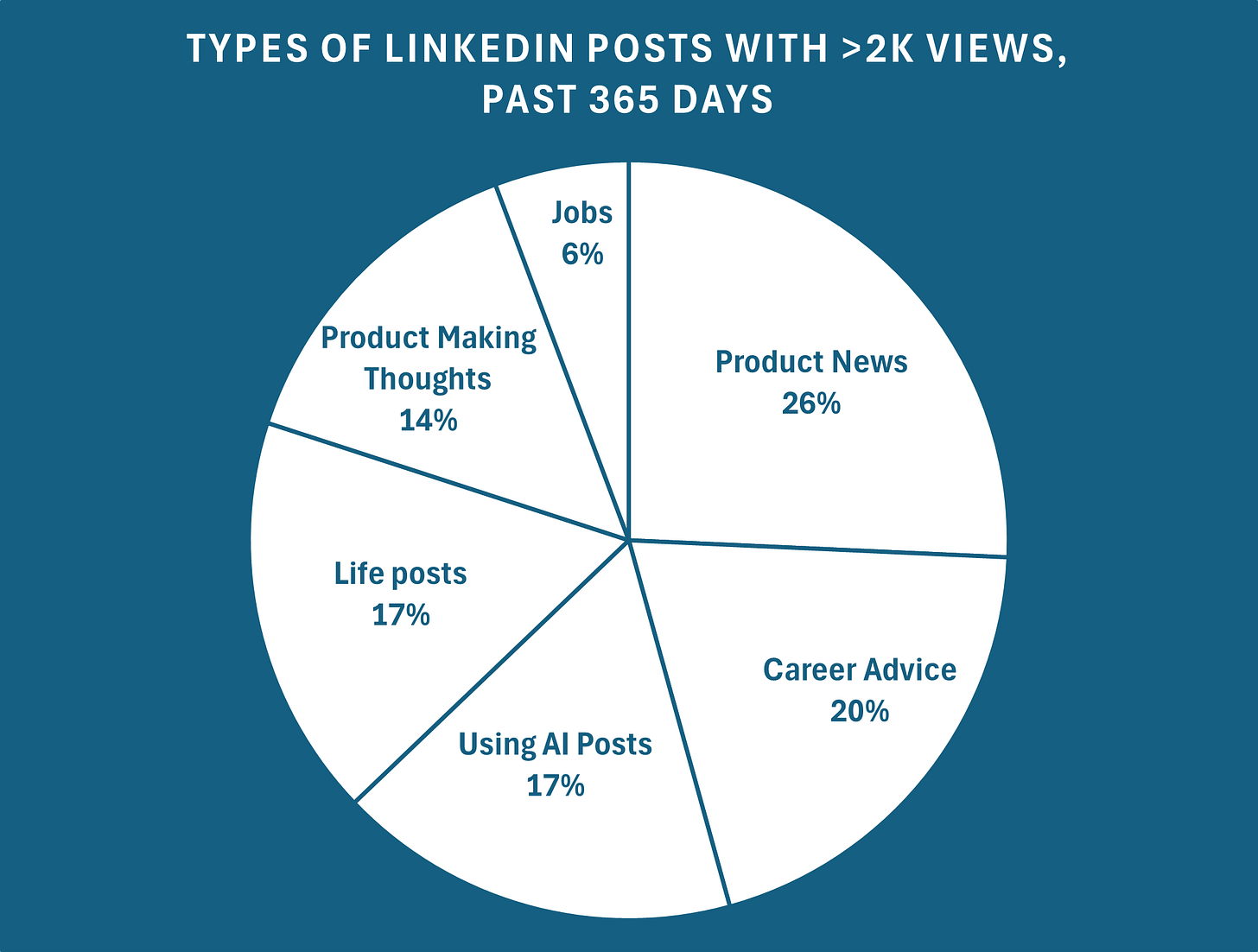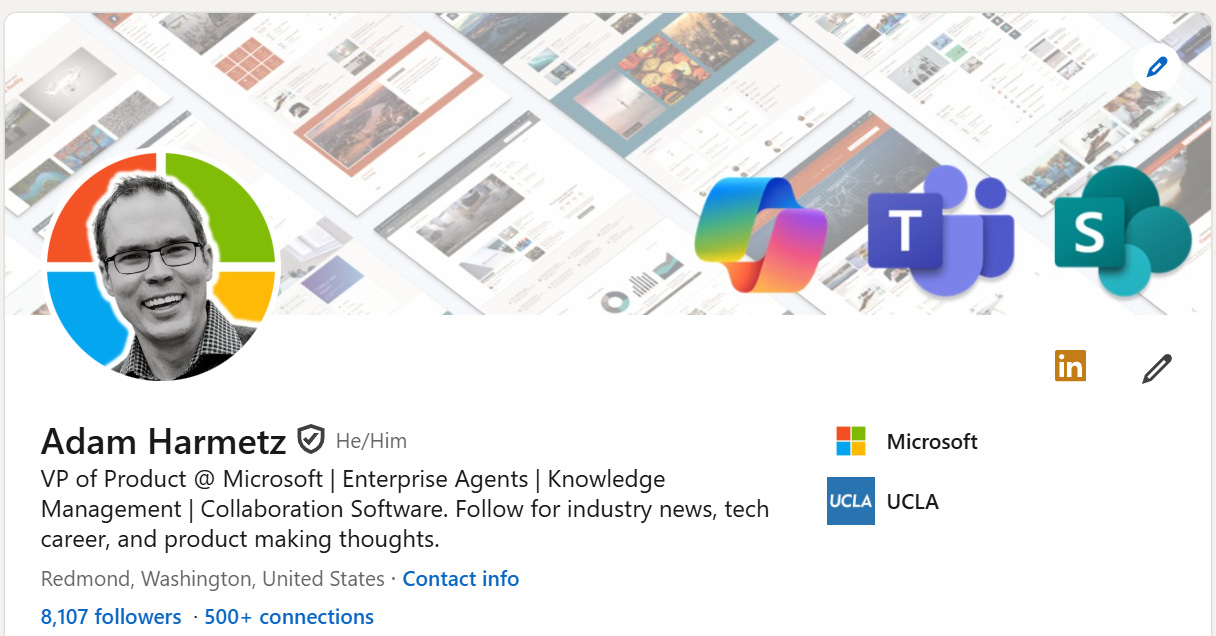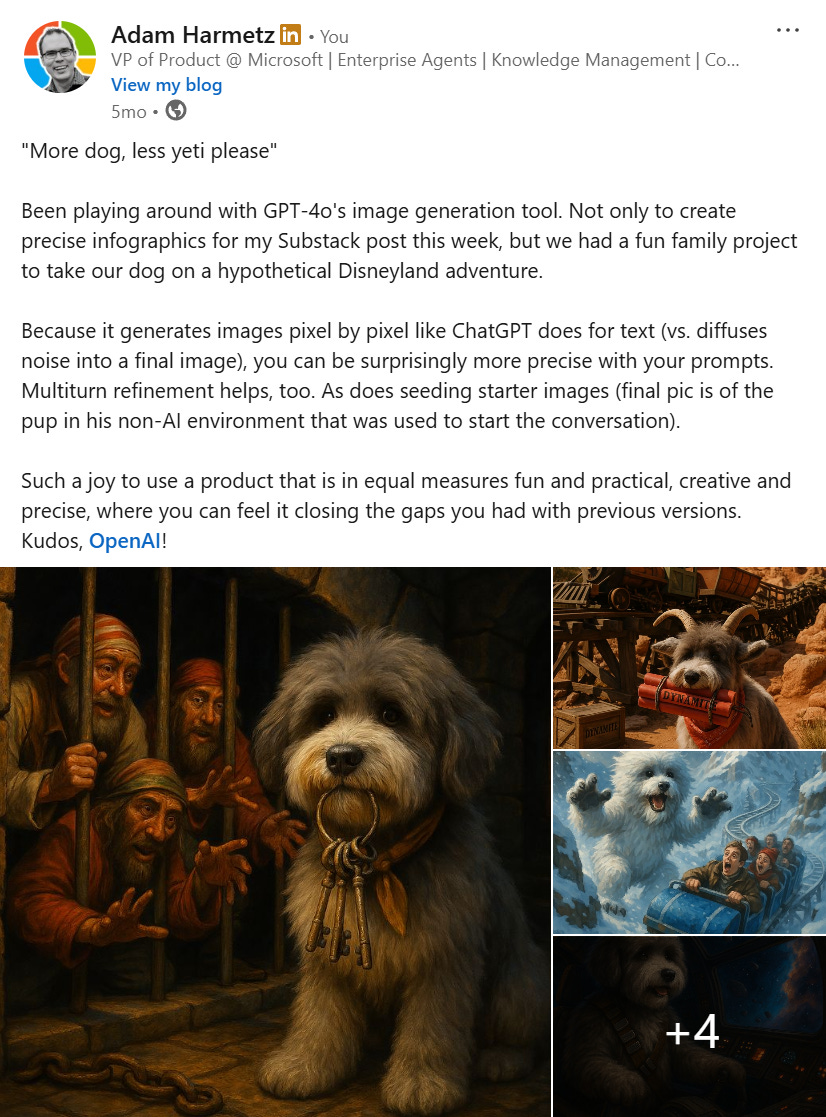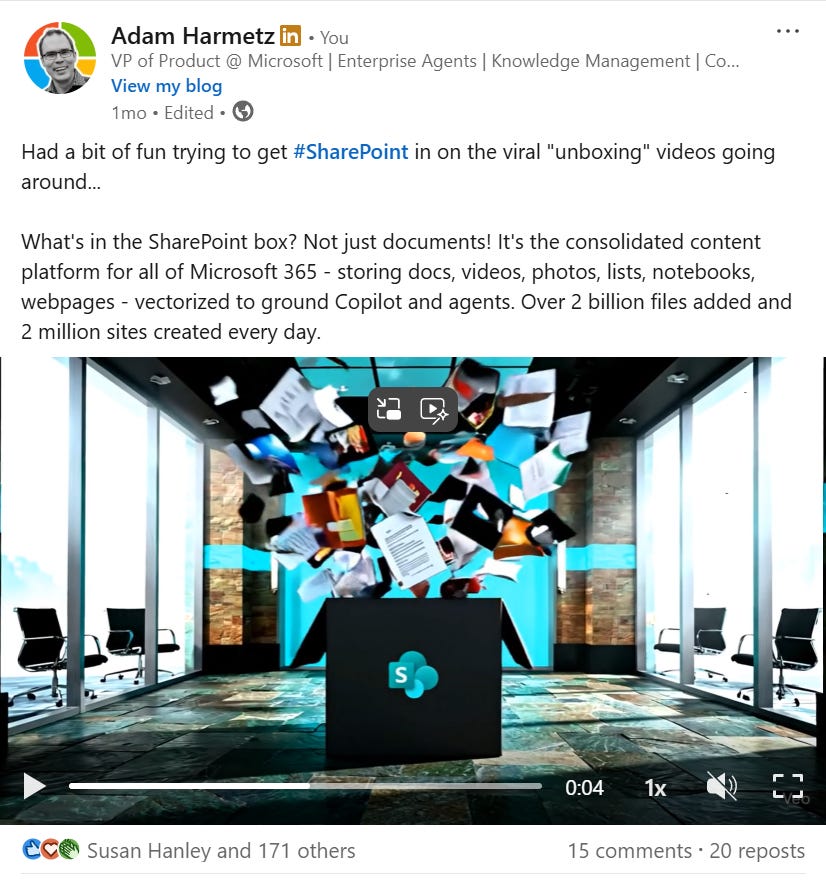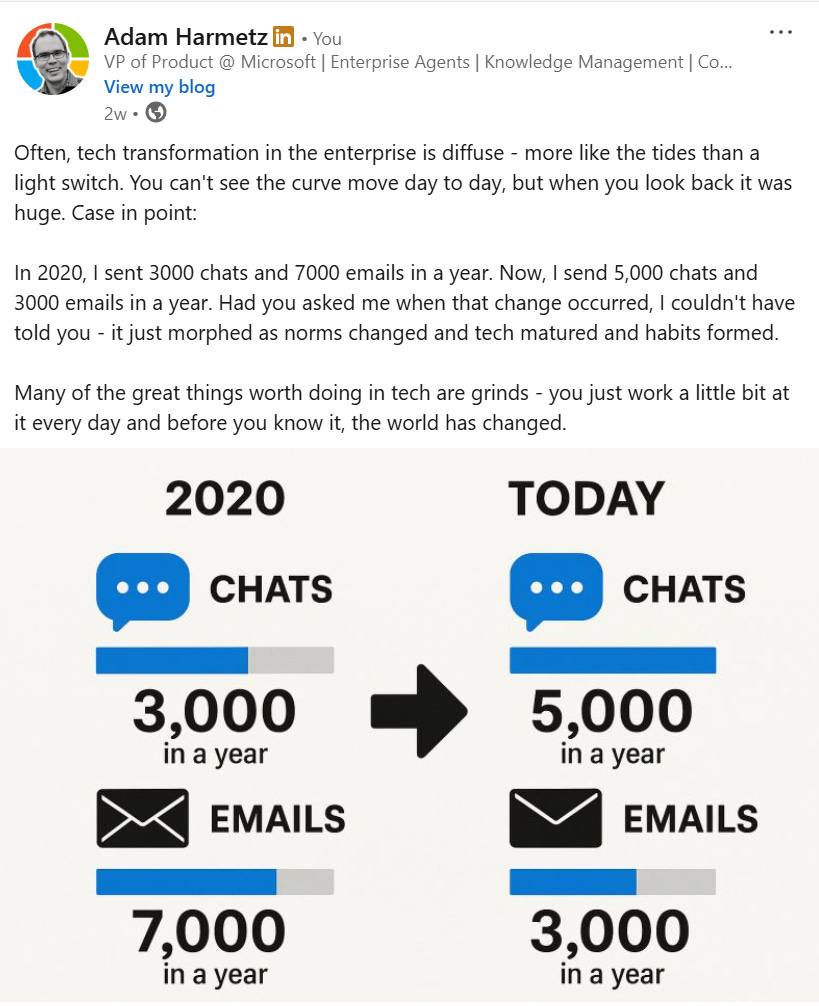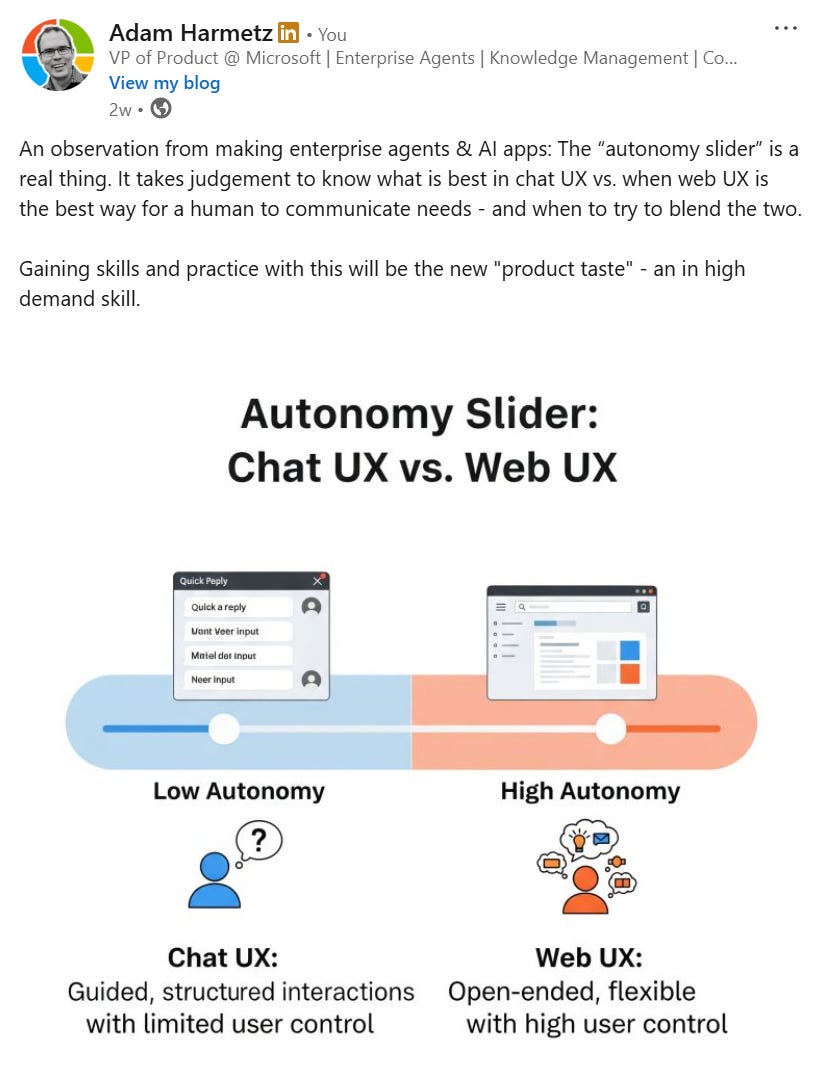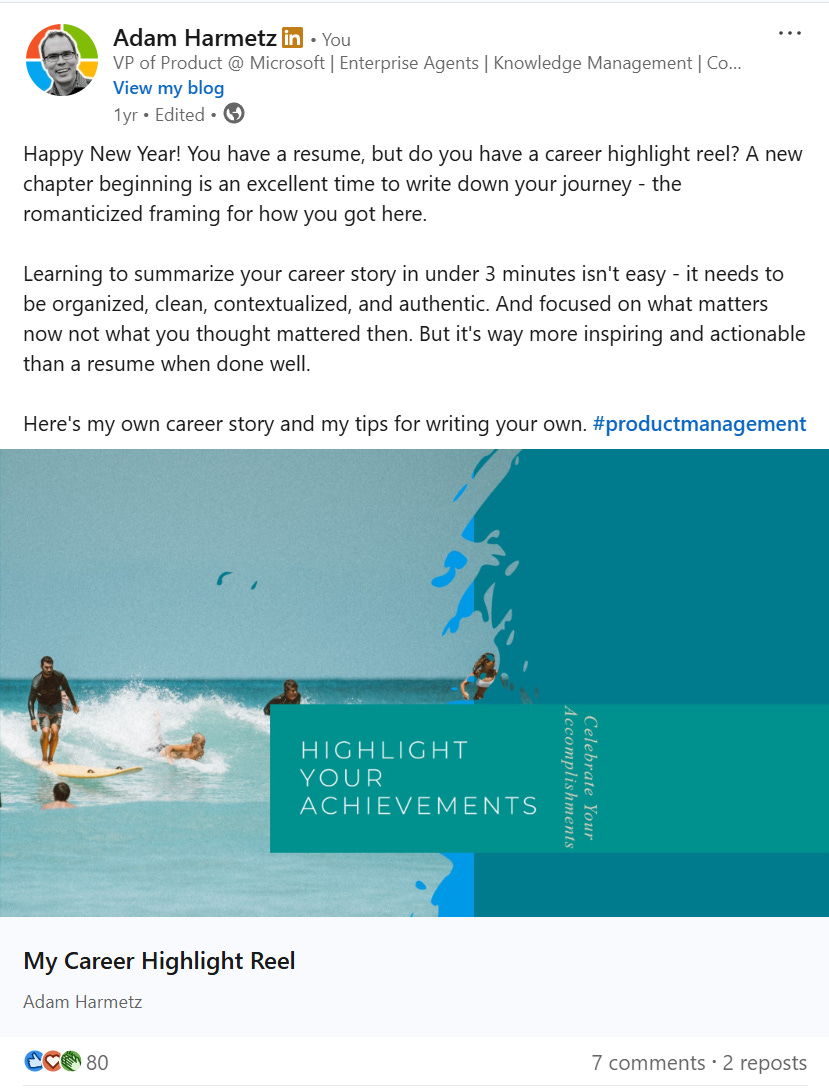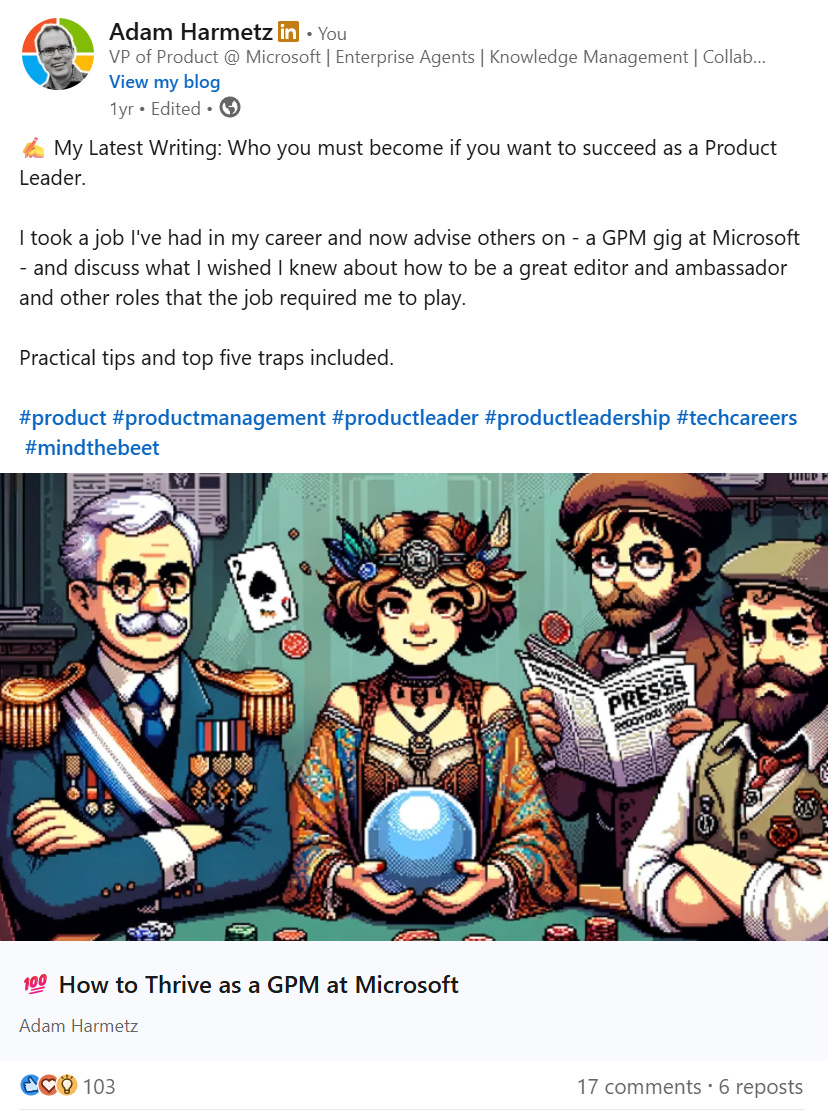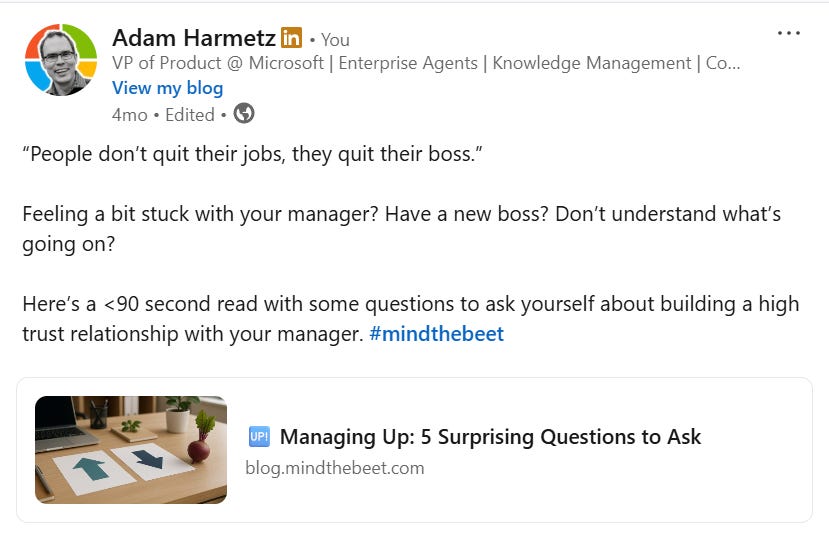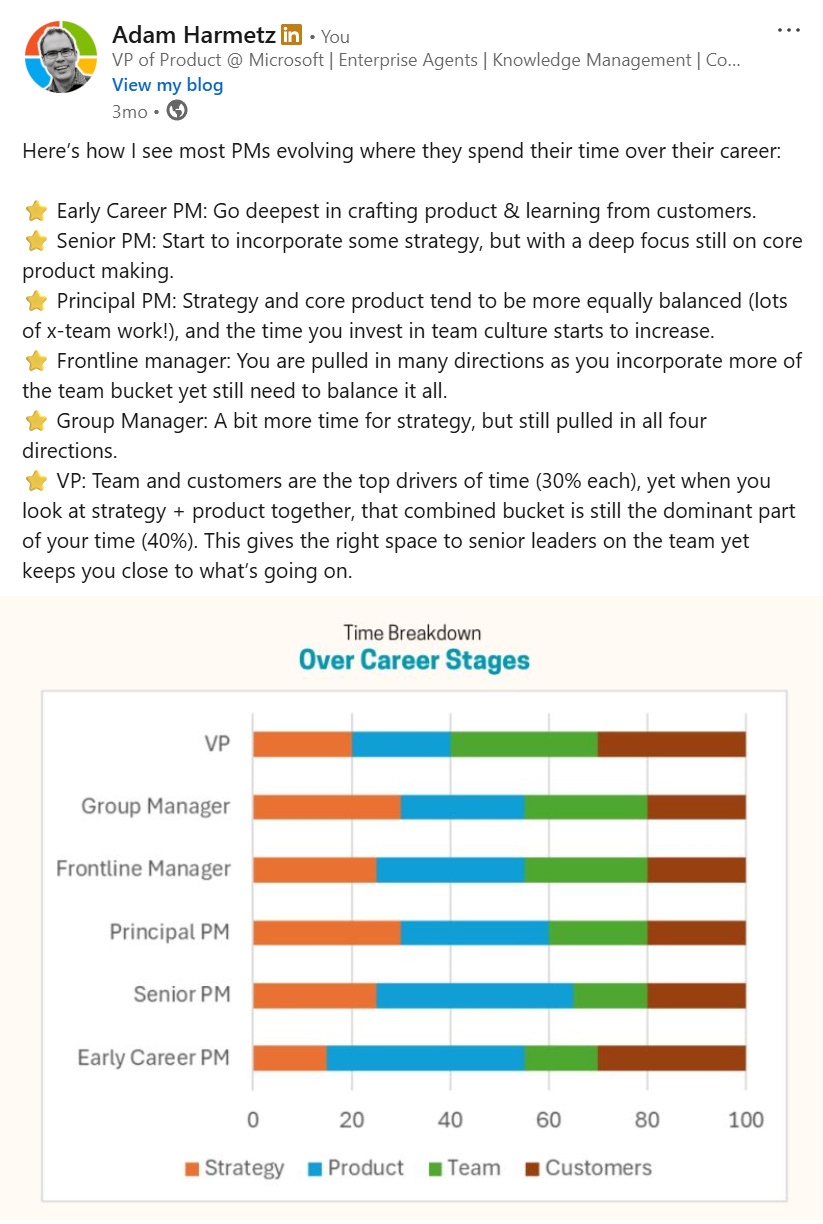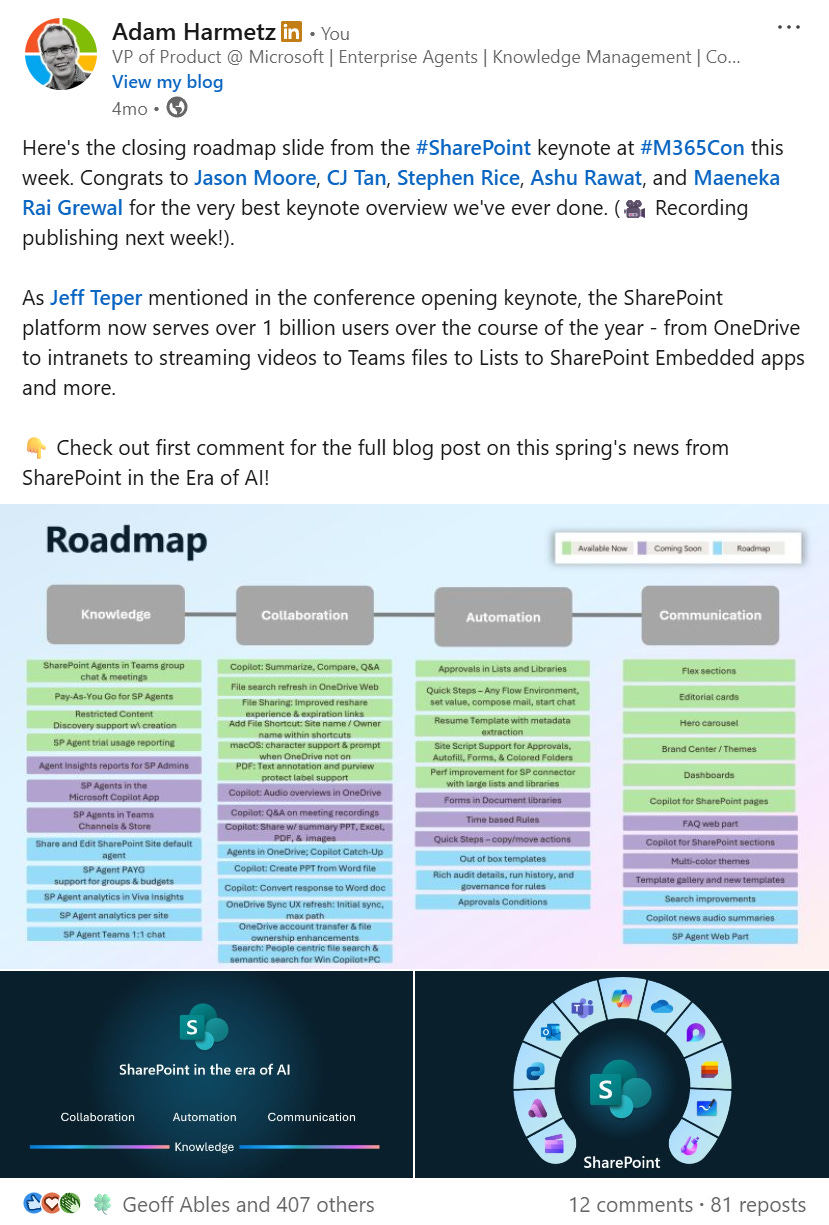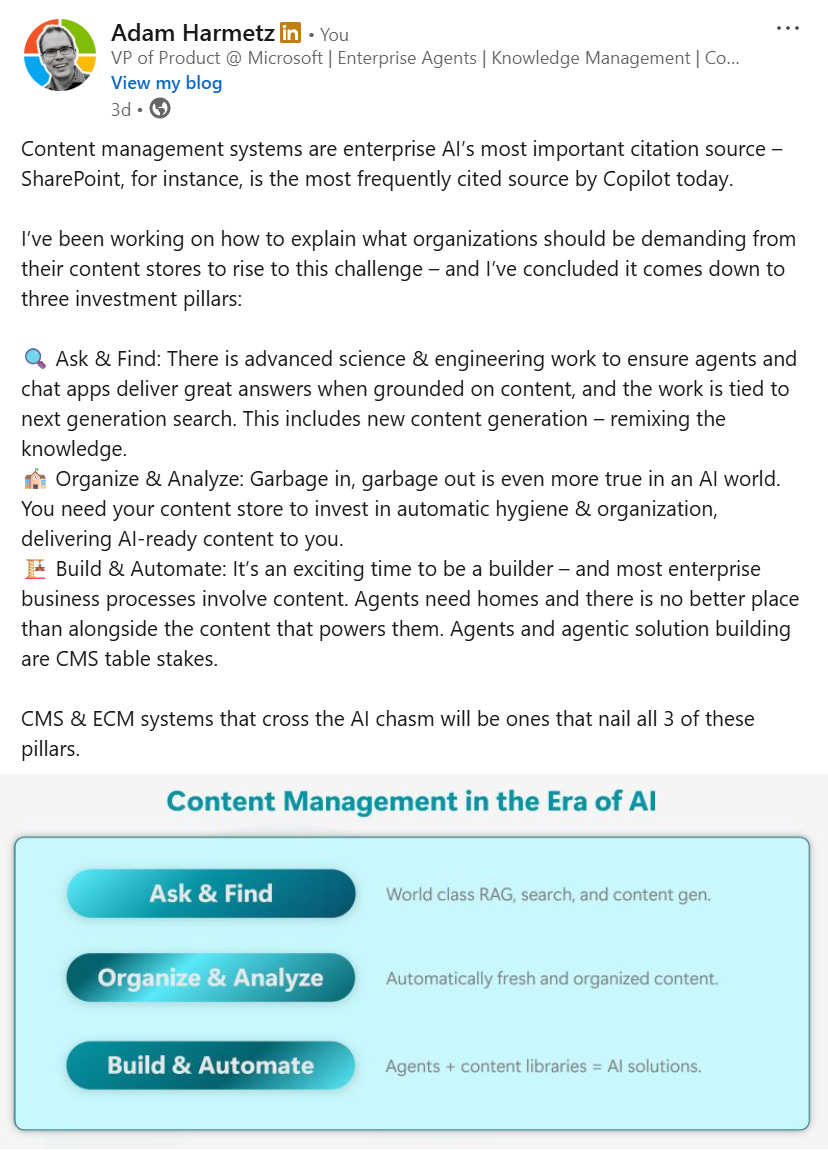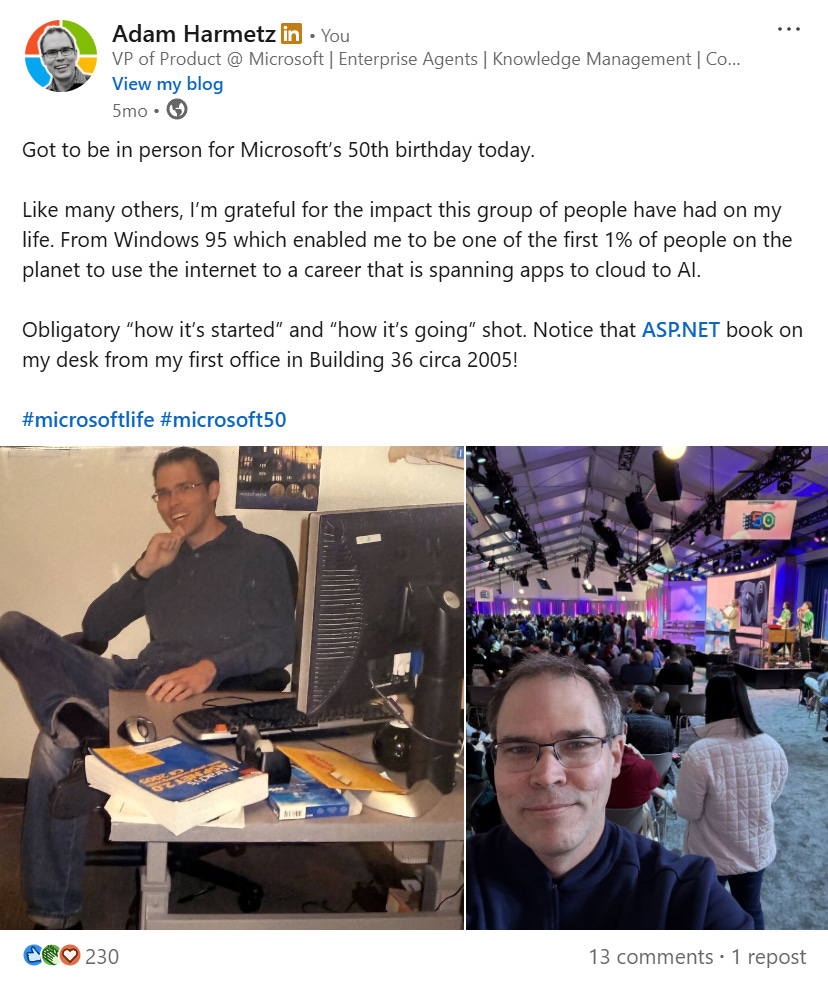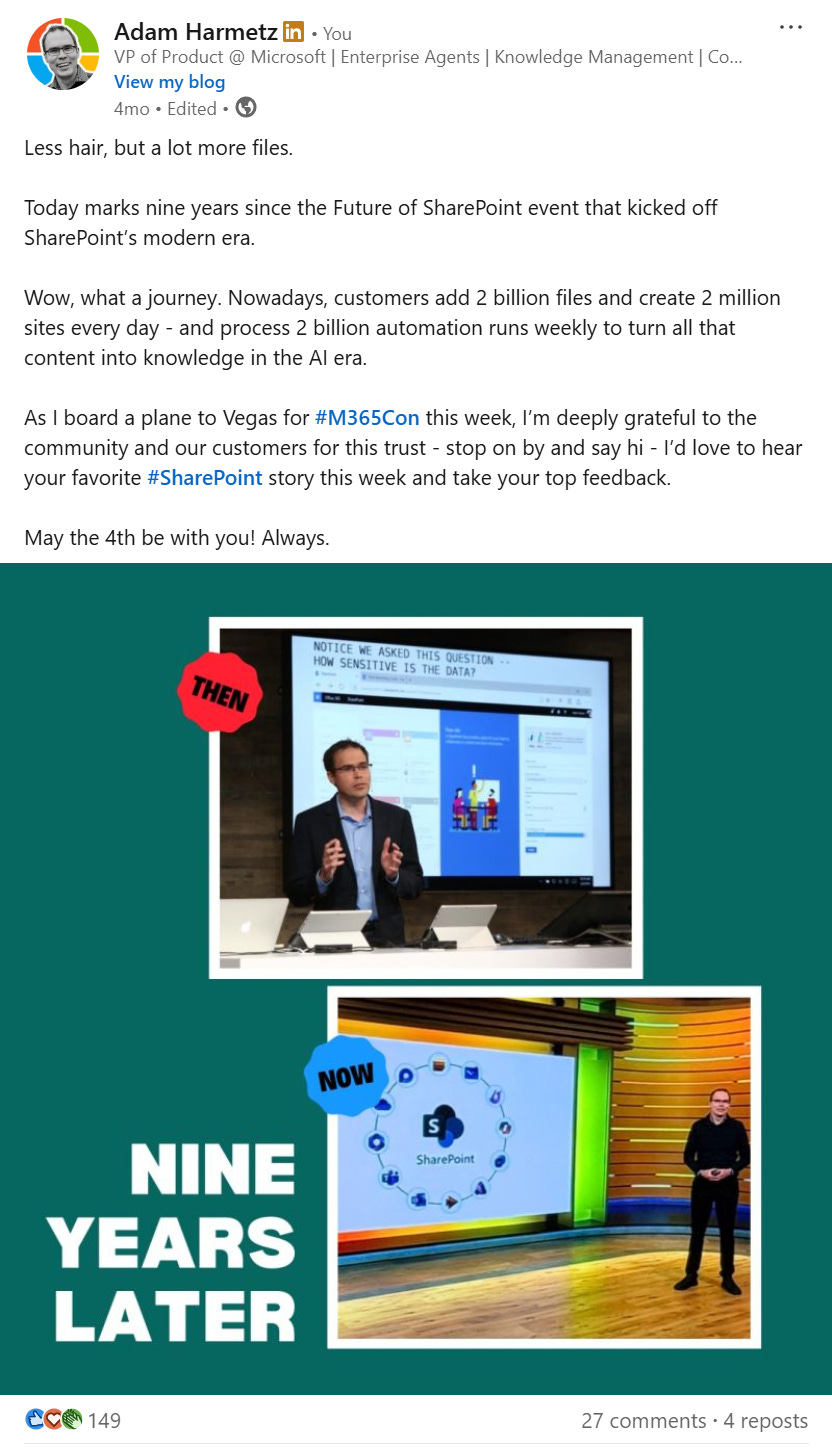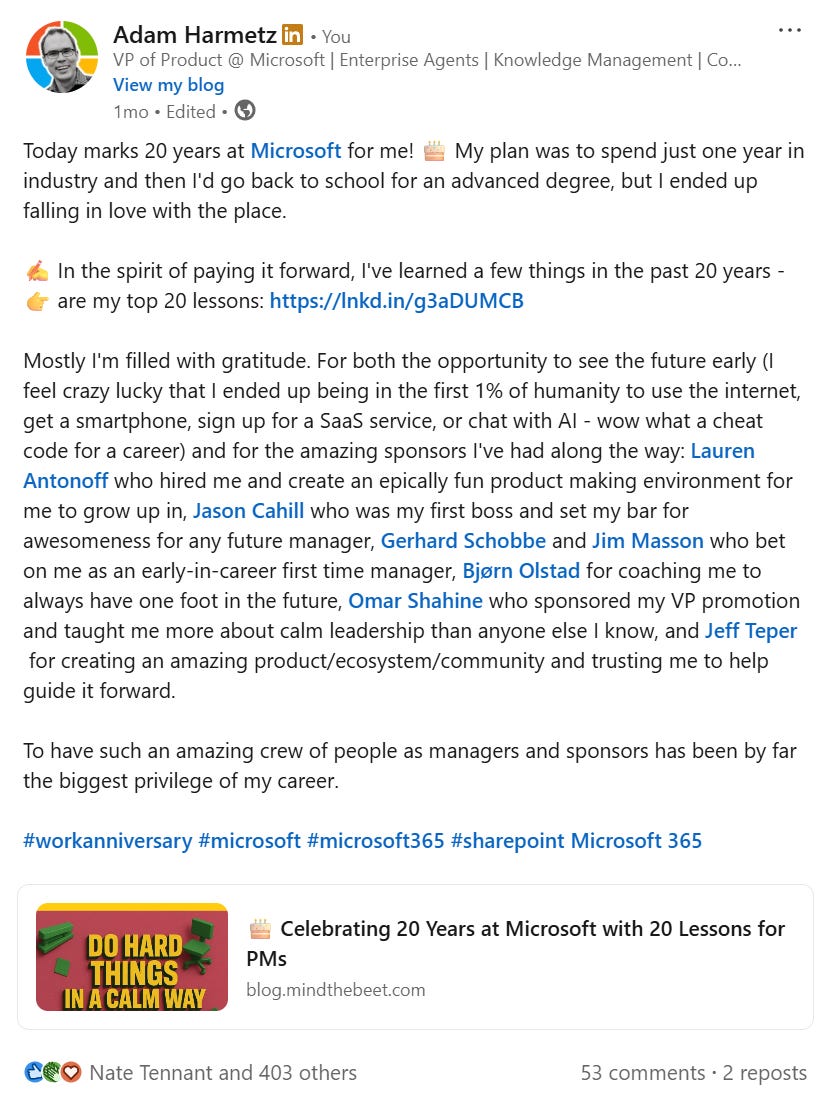Over the past few years, LinkedIn has transformed from only a place for jobs seekers into a home for product & tech community. Ever since Elon took over Twitter/X, the tech community around my own product has been a bit fragmented, but I’ve noticed over the past few quarters LinkedIn has emerged as the new center of gravity.
So, I’ve made it a point to be more active on LinkedIn - last week, my LinkedIn follower count crossed 8,000 - and this post shares my journey so far.
If you’d like to follow along, you can find me at: https://www.linkedin.com/in/adam-harmetz/
But First, Why
In ranked order, here’s my purpose for spending time on LinkedIn:
Clarifying thoughts. Brevity is in vogue right now. The ritual of crafting 3-5 unique posts - be it product news, AI thought leadership, or product-making tips - has helped me practice being precise as a communicator and keep up with norms in tech.
Stewarding tech community. LinkedIn has become the leading home in the post-Twitter world for my product’s social tech community. Listening to feedback and sharing product news now happens on LI.
Selling my team. I get to practice how to talk about the virtues of my company & team - and role model the leader I want to be. Yes, I share open job recs when we have them, but more important is the way posting helps me clarify our “aspire to” culture.
Learning industry norms. Although there is certainly a vibrant AI community still on X, I find LI is a place where I can keep tabs on best practices for product making, learn what’s trendy, and connect with fellow product makers.
I feel like some people are still stuck in this stigma that LI is only for job hunting - and I’m here to say it’s quite the opposite: LinkedIn has become an essential tool to shape my thoughts.
Stats & Process
Here’s how I approach showing up on the network:
3-5 scheduled posts/week. I prefer to find a quiet 30 minutes on Sunday night or Monday morning to schedule out the week’s post. After some research, I chose Buffer as my tool for doing this - it’s cheap but not free and has a depth of features specifically for LinkedIn.
Comment & listen. The key to showing up is not just broadcasting my thoughts, but engaging, commenting and capturing key feedback about my products. For product feedback, I share any interesting hot takes to internal Microsoft Teams channels we have that are dedicated to digesting feedback.
Keep up on social & LI trends. I stay curious and do research on content best practices and algorithm hacking - for example, whether hashtags help or hurt, how to get around the tax of having a link in a post, and trends on other networks that might transfer to LI. If nothing else, this makes me a smarter product designer and gives me empathy for more professional content creators.
For the sake of transparency, here are the views & user counts for my posts over the past 365 days. I am not anywhere close to being a Top Voice or hugely influential, and it’s a lot harder for a post to break through on LI now than it was just 1-2 years ago, as the network has matured and preference is given to the bigger influencers. But it is a start, and it’s only been a few months since I’ve gone into higher gear. I also don’t optimize my content for eyeballs; I try to prioritize authenticity and brand building more.
I think about my content in categories of post types - hopefully self-explanatory and I quickly did an analysis of any post with >2K impressions and what category they fell into:
It’s funny - a job posting used to be a guaranteed 20K impression post just 1 year ago, now they rarely break >2K impressions for me. The network has definitely transformed.
My Profile
Header
Lately, I’ve been on a kick to describe my job without using Microsoft’s product brands - which is reflected in my updated tagline on LinkedIn that is more industry-forward.
I decided to put my primary product logos in the banner and also decided to keep the explicit Call to Action (i.e. Follow me) with clear expectations on the type of content someone is opting in to.
About Me
I also recently rewrote the “About Me” section, focusing more on transformation and disruption and less on specific projects:
For 20 years, I’ve built & scaled apps, tools & technologies that help teams work better together and enable people in large organizations to gain expertise and find answers quickly. I’ve operated on the leading edge of every major change in collaboration & knowledge software, including web technologies, mobile, distributed computing, cloud, and AI. I excel at enabling product organizations to stay current with emerging technology, launch new products and line extensions, and grow a healthy tech ecosystem around a product.
Today, I manage a ~100 person team of product managers, data scientists, and customer success experts across the US, Europe, India, and China. We support a multi-thousand person engineering team and deliver a cloud service that serves over one billion users. I sit on Microsoft’s leadership team for collaborative apps & agents - which stewards the product strategy for some of the most iconic and resilient products in our industry, including Teams, SharePoint, OneDrive, and Viva.
I excel at building leadership teams of senior product executives, championing the career of group managers and senior product architects, and sponsoring cultural programs & product discovery processes that prioritize a fast-moving culture that drives growth outcomes using data.
I prioritize giving back to our industry, including as co-author of the Mind The Beet Substack, where we weekly share thoughts on product making & tech careers to 1k+ subscribers.
Follow for thoughts on enterprise adoption of AI, product making best practices, and maximizing tech careers.
Some Key Posts
Here are some key types of posts that have performed well for me.
Using AI
Posts about concrete use cases for AI always pop for me:
How I Work and the AI Transformation
I’ve used posts to uplevel my thinking about the way my team produces results. Here are a few examples:
Career Advice
With my career advice, it’s often a synthesis of the themes we discuss here on Mind the Beet. I try to ensure the career advice posts are novel, quick to digest, and get beyond surface level:
Product Framings
I use LinkedIn to try out tighter ways of describing the products I work on.
And I recently took an internal executive review on a product and upleveled into some industry framing:
A Bit of Lived Experience
A lot of people use LI to share milestones - and it’s always fun to celebrate and see people grow. I try to ensure my milestone posts “add to the conversation” with some insight or memorable take:
Wrapping Up
LinkedIn is far from perfect - it has a problem with bots & there is still a lot of performative and inauthentic content. And I have two big wish list items as a content creator:
It’s a terrible product for historical knowledge - search is abhorrently subpar and most filters/roll ups are randomly lossy.
It struggles with real-time events. Its hashtags are mostly meaningless, and it has no feature for onsite community gatherings or to monitor the zeitgeist of a moment like a tech keynote.
If LI invested in these two areas, they could completely corner the tech community market.
Follow me at https://www.linkedin.com/in/adam-harmetz/.


